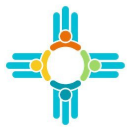Health insurance companies use strange words to describe their services. This is meant to make comparing plans easier. But sometimes the words don’t make sense!
If shopping for health insurance makes you feel confused or frustrated, we’ve got your back. We made a dictionary of common health insurance words to help you find the best health coverage. And if you get stuck, BeWell Certified Assisters are ready to answer your questions.
Let’s start with some of the basic words you might see while shopping for health insurance.
Basic Health Insurance Words
Health insurance is a contract between you and an insurance company (insurer). You agree to pay a premium—a set amount of money—and the insurer pays for some of your health care costs.
Plans are the insurance options from which you can choose. A plan can come from your job, a union or an insurer on the New Mexico Health Exchange, like BeWell.
You can choose a plan that pays for a little or a lot of your health care, depending on what you need and can afford. Benefits are the services your insurance pays for (coverage). A beneficiary is a person covered by your plan. Excluded services are not covered.
Sometimes you must pay for care with your own money before insurance starts to pay. That is a deductible. For example, if your plan has a $1,000 deductible for each beneficiary, you will pay $1,000 worth of health services for them. After that, the plan starts paying for care. Some plans have an aggregate family deductible, which combines the dollars spent by all beneficiaries.
Make sense so far? Here are a few more insurance words to know:
- Provider: A doctor, nurse practitioner, physician assistant or other approved medical professional who can give health care on your plan.
- Network: This is a group of providers, hospitals and clinics that accept your insurance. In-network means they contract with your insurer. Out-of-network means they don’t, but you may be able to pay more to get care from them.
- Prior authorization: When your doctor must contact the insurer to approve services or medicine before the company will pay.
- Catastrophic health plan: Plans that don’t cover many health services. Healthy people younger than 30 might buy these plans to try and save money. The plans have low premiums, but you will pay a lot out-of-pocket if you get hurt or sick.
- COBRA: If you lose insurance through your job, you might be able to keep it for a while by law. You will pay the premium, plus what your job used to pay and other fees.
- Summary of Benefits and Coverage (SBC): A summary to help you compare plans’ prices and benefits.
What the 10 BeWell Health Essentials Mean
Every BeWell plan covers these 10 health care services:
- Ambulatory patient services: Treatment or surgery you get in a doctor’s office or hospital without staying overnight. This is also called outpatient care.
- Emergency services: Treatment you get in the emergency department.
- Hospitalization: Treatment or surgery when you stay overnight in the hospital. This is also called inpatient care.
- Maternity and newborn care: Health care for your pregnancy and new baby.
- Mental health and substance use disorder services: Care and treatment that includes behavioral health counseling and addiction treatment.
- Prescription drugs: Medicine you can only get with permission from an approved provider.
- Rehabilitative and habilitative services and devices: Services that help you get back, keep or get better at daily living functions that were lost when you were disabled, hurt or sick.
- Laboratory services: Checks of your blood, saliva, cells or urine to diagnose or manage a health problem.
- Preventive, wellness and chronic disease management services: Health care visits to help you stay healthy. For example, screenings, vaccines and checkups.
- Pediatric services: Health care for children, including oral and vision care.
Now, let’s discuss some words to look for while you shop for the best plan.
Health Condition and Service Definitions
All plans cover different services for illnesses and injuries. For example, if you have a disability that limits hearing, seeing, thinking or walking, check the plan to make sure what you need is covered.
Here are some of the words to look for while shopping for a plan:
- Durable medical equipment: This includes things to help you manage and live with a chronic condition or disability. For example, diabetes test strips, oxygen and wheelchairs or scooters.
- Pre-existing condition: Conditions you had before getting your new plan, such as asthma, cancer or diabetes. Check whether the plan you choose covers care for conditions you already have.
- Emergency medical condition: Life-threatening illness or injury that needs immediate care.
These are definitions for types of care:
- Primary care: Services to prevent or treat common illnesses. A primary care provider (PCP)—a doctor, nurse or physician assistant—gives, coordinates or helps you access a range of health care services.
- Medically necessary: Services or care that meet medical standards and that you need to diagnose or treat a condition.
- Emergency room services: Care you get in an emergency room.
- Urgent care: When you need quick care for an illness or injury, but it is not an emergency.
- Rehabilitation services: Care that helps you keep or improve daily living functions after illness or injury. For example, physical and occupational therapy or speech-language pathology.
It’s important to understand your plan’s benefit period for hospitalization. This is how insurers track payment for inpatient care. The benefit period starts the day you are admitted to the hospital or a skilled nursing facility and ends when you haven’t had inpatient care for 60 days in a row.
Types of Doctors You Can See
Most plans cover care from a primary care provider who can give you a range of checkups and treatments. A preferred provider works with your insurer to give care at a lower cost. Preferred providers may be tiered, so seeing some might cost more than others. Your plan may also have participating providers, who give care at a higher rate.
If you are eligible to get care at a Tribal Health Care Center or Indian Health Services, you can keep seeing doctors at those clinics. When insurance pays Tribal Health Care Centers or IHS for your doctor’s visits, the clinics use that money to take care of more people!
Some conditions need care from a specialist, which is a provider that gives a specific type of care. For example, a cardiologist is a heart specialist. You may need a referral—written permission from a provider—to see a specialist and pay for the care with insurance.
Words About Paying for Health Insurance
The usual, customary and reasonable (UCR) amount is the total paid for a medical service in your area based on what providers in the area usually charge for that care. The UCR amount may be used to set the allowed amount—the most a plan will pay for services it covers.
If the provider charges more than the allowed amount, you might have to pay the difference. This is called balance billing. For example, if the provider charges $100 but the allowed amount is $70, you might get a bill for $30. This usually happens when the plan includes out-of-network benefits.
Many plans require you to pay a little money when you get care while the insurer covers the rest. These are out-of-pocket costs, which may be called coinsurance or copayment:
- Coinsurance is the percentage you must pay for care, after your deductible. For example, let’s say you have met your plan’s deductible and it has a 20% coinsurance. If your next doctor’s visit costs $100, you will pay $20 at your appointment—the health plan pays the rest.
- Out-of-network coinsurance, which is when you pay more to see a doctor who is not contracted with your insurer.
- Copay is the set amount you pay for covered services. For example, some plans have you pay $15 when you visit the doctor for any reason.
- Out-of-network copay is the set amount you pay to see a doctor who is not contracted with your insurer for services covered by your plan. These copays cost more (for example, $30 instead of $15)
Some plans set an annual limit, which is the total amount insurance will pay in one year for hospital stays, medicine or doctor visits. Once you reach the annual limit, you’ll pay for your own health care costs the rest of the year.
Most plans have an out-of-pocket limit for individuals or families. This is the maximum amount of your own money you will pay for health care in a year. After that, your plan will cover your health expenses (except your monthly premium).
If you think the insurer made a mistake, you have options. You can file a grievance, which is a complaint. If it doesn’t get fixed, you can file an appeal to ask the insurer to review it again.
Words to Help You Save Money
Members of a federally recognized tribe—a group recognized as an Indian tribe by the Department of the Interior—may be eligible for low- or free insurance. Depending on how much money you make, you might pay just a few hundred dollars a year for high-quality insurance. With BeWell, 50% of eligible New Mexicans pay $50 or less per month for high-quality health plans.
Cost-sharing is a discount that lowers how much you pay at the doctor’s office, hospital or pharmacy. You can get this discount through a silver level BeWell plan if you qualify based on income. Native Americans may qualify for other cost-sharing benefits without a silver level plan.
If you don’t have a plan, you might pay a fee for not having health insurance when you file taxes. There are exceptions for members of federally recognized tribes or those who are eligible for care through Indian Health Services.
Ready to Sign Up? Learn These Enrollment Words.
- Waiting period: The time that must go by before your BeWell plan starts to pay for health care if you or a dependent are eligible for insurance through an employer.
- Open enrollment period: This is when people can buy insurance in the Marketplace. Native Americans and people who lose their coverage can enroll anytime.
- Qualifying life event: You may be able to change your health plan outside of open enrollment if you get married or divorced, have a baby or adopt, move to a new state, lose other health coverage or become a U.S. citizen or member of a federally recognized tribe.
- Special enrollment period: When you can change your health plan due to a qualifying life event outside of open enrollment.
Whew! We covered a lot in this dictionary! And we hope it helps make shopping for insurance a little easier. Questions? We can help you find the best plan. Call 833-862-3935 today or fill out an online form to get help from a BeWell Certified Assister.




